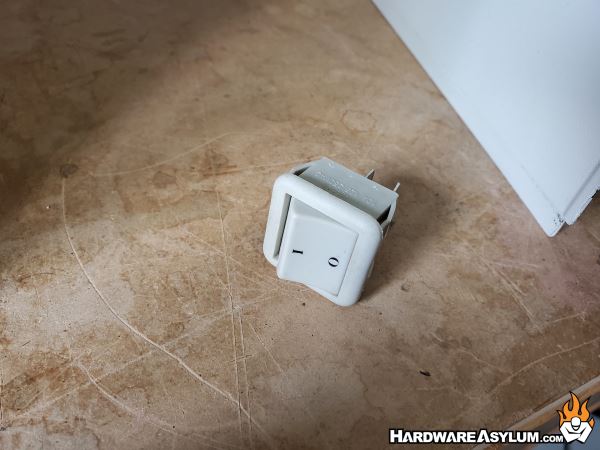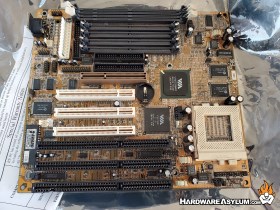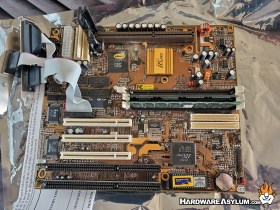Retro PC Adventure at RE-PC in Seattle
Author: Dennis GarciaBack to Southcenter and Conclusion
First on my list was a rocker switch for the retro pc project. I can find replacements online but they are very modern and very black which would clash with my build. My goal here was to either find a switch thinking maybe they would be in a bin someplace or to buy an entire case so to salvage the switch.
As it would turn out Gene came to the rescue and found one in the back.

Next on my list was a couple floppy drives with black bezels and you wouldn’t believe how difficult that is. It seems the world of the beige box spawned an entire army of beige floppy drives, ironic eh? Sadly I struck out on a 5.25” drive but did get a couple 3.5”s at the downtown store.
Finally, I wanted to pick up a couple Baby AT motherboards for the retro PC project(s). While putting a vintage 486 together would be fun I find it more beneficial to look at something in the Pentium range. With a Pentium you are still limited to a single core but you have access to things like AGP and SDRAM which are a night and day difference in performance. On top of that you still get ISA slots, PCI Slots and floppy drives making that generation the perfect middle ground for testing a TON of stuff.
After a couple hours of searching and researching, I found two motherboards that seemed like they would fit the bill. The first is a Super Socket 7 featuring an AGP slot and VIA chipset. It has a soldered BIOS chip and some damage to the last ISA slot but, nothing deal breaking.
The second was a Slot 1 board using a SIS chipset. Sadly, this board has no AGP slot but does have three SDRAM slots and a bunch of dust.
I was told both boards had been tested but, over their time on the floor they had lost their protective static bag. To me their future is uncertain on if they would still work or will need to be repaired.
When it comes to motherboards the most common damage is to the capacitors, micro static charges, weather and age can all cause damage and "this" generation was plagued with the exploding capacitor debacle. Lucky for me, caps are pretty easy to replace.
My goal for visiting REPC was twofold. First was curiosity, I wanted to relive a time when I could visit a store and find old computer hardware. Of course, computer stores have changed a lot over the years and what was once a thriving business of upgrades and part swaps has become disposable where computers are send to recyclers to extract the metals and collect the toxic components in a responsible manner.
My second goal was to find a number of hard-to-find components for my retro builds. When searching through the motherboards I found a huge number of AT style boards. Most were Socket 7 and the early pre-Slot 1 generation and while rare, I did see some 486 boards with many of them on the special racks.
Thing is, while I was browsing the store and motherboard section, I passed over just about everything on display including a Soyo Dragon that I had in my basket several times but was ultimately put back in the box.
This brings up an important thing about visiting any “Vintage” store including thrift and bargain stores. Most everything “good” will have already been picked over. At the downtown store I found a bin with over 100 AGP video cards which were all pretty low end, nothing from NVIDIA, very few from ATI and the rest were basic 2D accelerators. I didn’t see a single 5.25” floppy drive at either location and most of the motherboards I looked at were from that awkward generation between socketed Pentium and Slot 1 where the board changed with every processor release (sound familiar??). Most builders would pass on these since the next generation offered so much more.
Ironically enough I also didn’t see any Socket 8 motherboards and only a couple 386’s.
Despite this it would seem that actual electronics recycling can still be profitable when done correctly and while I might not have found everything I was after I still came home with a grip of gear I only saw a fraction of what was actually being stored at either location.
If anything, that is what I like most about RE-PC, they actually recycle electronics by reselling them to the public and spend time to ensure what they are selling is going to the right people.



